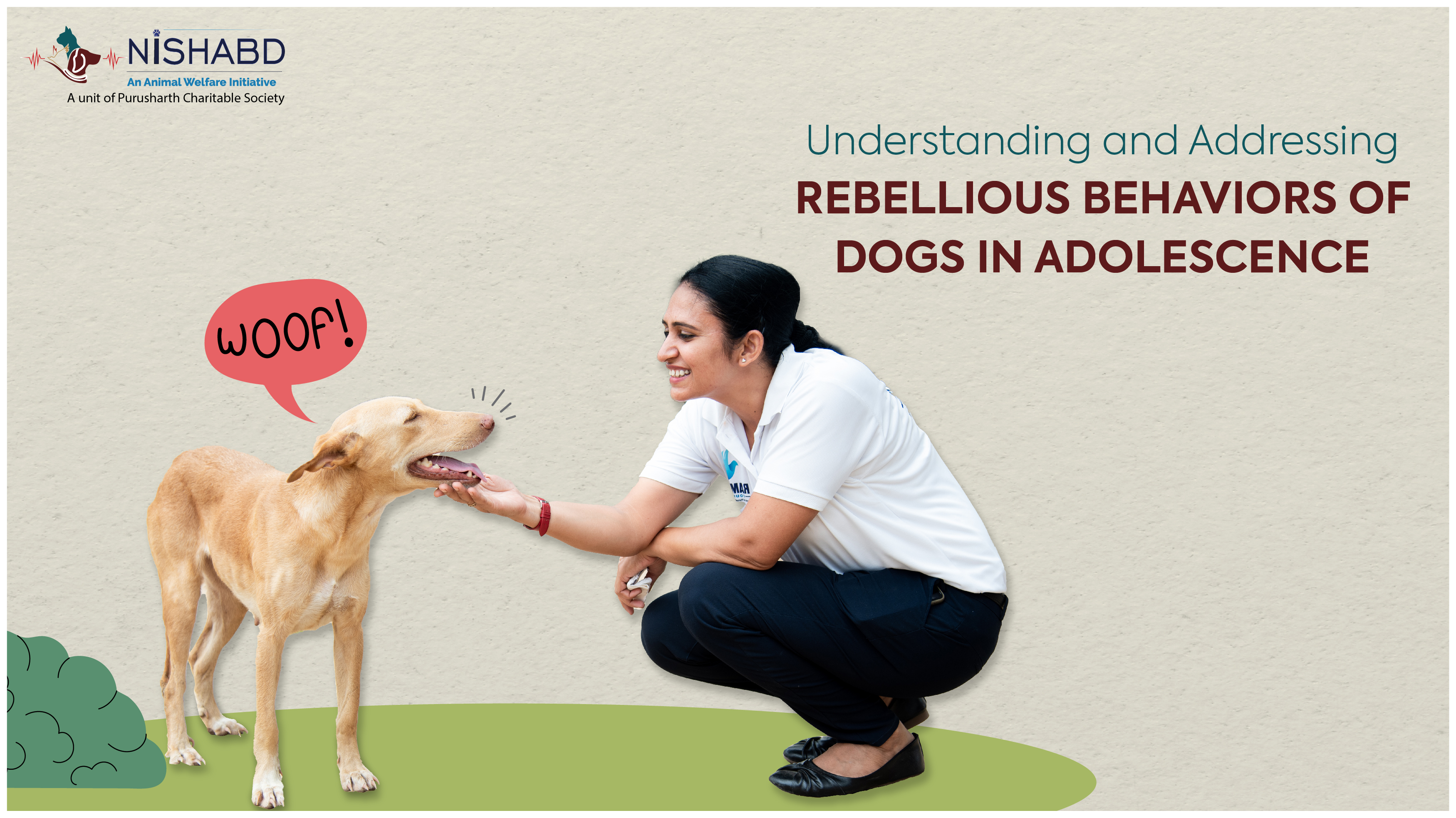Navigating the Teenage Phase: Understanding and Addressing Rebellious Behaviors of Dogs in Adolescence

Adolescence is a transformative phase for both humans and dogs. Like teenagers, dogs go through a rebellious stage during adolescence. This period can be challenging for dog owners, as they witness sudden changes in their furry companions’ behavior. However, understanding the underlying factors and employing effective strategies can help navigate this phase with patience and compassion. In this blog, we delve into the world of adolescent dogs, exploring the rebellious behaviors they may exhibit and providing insights on how to understand and address these behaviors correctly. By understanding this developmental stage more deeply, dog owners can foster a harmonious relationship with their four-legged friends.
- The Adolescent Phase:
Adolescence marks a significant developmental milestone for dogs, typically between six and eighteen months. During this time, hormonal changes, increased independence, and a surge of energy can lead to the manifestation of rebellious behaviors. Remembering that these behaviors are a natural part of a dog’s growth and maturation process is essential.
“Adolescence may test our patience, but with love and understanding, we can guide our dogs to become confident and well-behaved companions.” - Identifying Rebellious Behaviors:
Rebellious behaviors in adolescent dogs can vary but often include disobedience, testing boundaries, selective listening, increased excitability, and a tendency to explore their surroundings more assertively. Recognizing these behaviors as a regular part of adolescence can help dog owners approach them with patience and understanding. - Hormonal Changes:
Hormonal fluctuations play a significant role in the behavioral changes observed during adolescence. Dogs may experience increased sexual maturity, leading to mounting behaviors, territorial marking, and a heightened interest in other dogs. Spaying or neutering your dog can help alleviate hormonal influences, but behavioral training is still necessary to address other rebellious behaviors. - Consistency and Training:
Consistency is critical when dealing with rebellious behaviors in adolescent dogs. Establishing clear boundaries, rules, and expectations early on and maintaining them throughout adolescence is crucial. Implementing positive reinforcement training techniques can help shape desired behaviors and reinforce obedience. Consistency in training methods and expectations will aid in establishing a harmonious and respectful relationship with your dog. - Mental and Physical Stimulation:
Providing ample mental and physical stimulation is vital for adolescent dogs. Engaging them in activities that challenge their minds and expend energy can help redirect their focus and curb rebellious behaviors. Regular exercise, interactive play sessions, puzzle toys, and obedience training can provide outlets for their energy and stimulate their minds, preventing boredom-induced misbehavior. - Socialization and Exposure:
Continuing socialization efforts during adolescence are crucial to ensure that dogs develop appropriate behaviors and coping mechanisms. Exposing them to various environments, people, and other animals in controlled and positive ways can help them learn how to navigate social interactions effectively. Proper socialization can also reduce fear-based aggression and anxiety in unfamiliar situations. - Patience and Positive Reinforcement:
Patience and positive reinforcement[1] are fundamental when addressing rebellious behaviors in adolescent dogs. Punitive measures or harsh training techniques can exacerbate the problem and damage the bond between you and your dog. Instead, focus on rewarding desired behaviors, offering praise and treats when they demonstrate obedience, and redirecting their attention away from undesired behaviors. Consistency, patience, and positive reinforcement will yield better results in shaping their behavior.
Understanding and navigating the rebellious behaviors of dogs during adolescence requires patience, consistency, and a deep understanding of their developmental stage. Dog owners can guide their furry companions through this challenging phase by recognizing these behaviors as a regular part of their growth process and implementing effective training techniques. Embrace the journey with empathy and understanding, knowing that your adolescent dog will mature into a well-behaved and cherished family member with time, consistency, and positive reinforcement.
“Through consistency and positive reinforcement, we can guide our dogs through their rebellious phase and foster a relationship built on trust and respect.”
Read our Article: Embrace a Heartwarming Journey: Choosing Love through Animal Adoption
